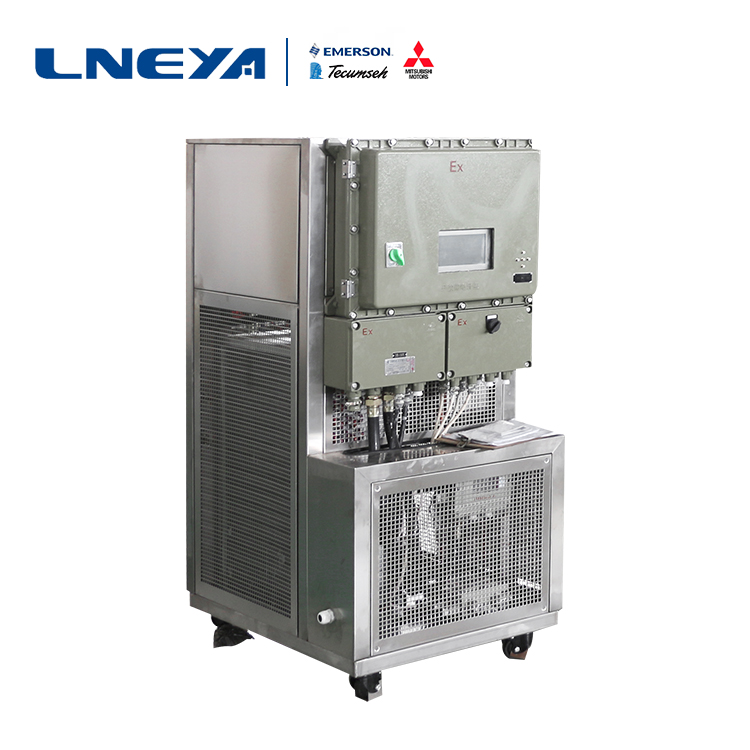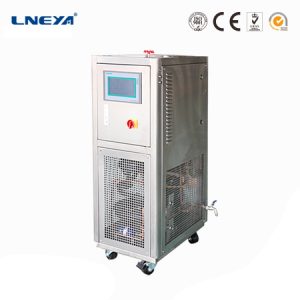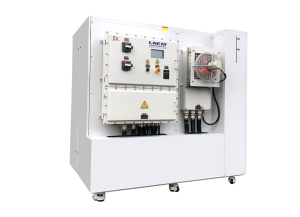Bioreactor temperature rise and temperature control equipment
A bioreactor is a reaction system in which a naturally occurring microorganism or a microorganism having a special degrading ability is inoculated into a liquid phase or a solid phase. The two reactors currently studied the most are “elevator type reactors” and “soil mud reactors”. The elevator type reactor provides the proper nutrients, carbon sources and oxygen through the flow of the aqueous phase to achieve the purpose of degrading pollutants in the soil. Compared to solid phase systems, bioreactors are capable of effectively degrading contaminants in less time.
Bioreactors sound strange, but the basic principles are quite simple. The stomach is a complex bioreactor that processes food inside the body. The food is digested by various enzymes in the stomach and becomes a nutrient that we can absorb. Bioengineering bioreactors are functions that mimic the function of living organisms in vitro and are designed to produce or test various chemical reaction devices. In other words, a bioreactor is a device system that uses a biological function of an enzyme or an organism (such as a microorganism) to perform a biochemical reaction in vitro, and is a biological function simulator such as a fermentor, an immobilized enzyme, or an immobilized cell. Reactor, etc. Then the problem of how to cool the bioreactor is generated.

Wuxi Guanya LNEYA refrigeration heating temperature control system adopts fully enclosed pipeline design, adopts high efficiency plate heat exchanger, and is applied to the temperature rise and temperature control of glass reactor, metal reaction kettle and bioreactor, especially suitable for reaction process. There is a need for heat and heat release process control.
Temperature process control principle (control reactor material temperature)
TCU temperature control unit schematic
1. The method of changing the control set value can respond to the system lag in the process as soon as possible, and obtain the minimum system overshoot. The control consists of two sets of PIDs (each set of PIDs are variable) control loops. These two sets of control loops are called: the primary loop and the slave loop, and the control loop of the master loop is used as the setpoint of the slave loop. The system adopts feedforward PV, and the output of the PID operation result of the main control loop is combined with the feedforward PV signal as the set value of the slave control loop, so that the temperature change gradient is controlled to ensure the temperature control accuracy of the system. (General anti-lag cascade control)
2. A specially designed lag predictor (no model self-built tree algorithm) generates a dynamic signal yc(t) instead of the process variable y(t) as a feedback signal. An e(t) signal is generated to the controller to cause the controller to predict that there is no large hysteresis in the control, so that the controller can always generate a suitable control signal. That is to say, even if there is a large hysteresis, the dynamic signal yc(t) can keep the feedback loop working normally. While the general PID is used to control the process with significant time lag, the controller output is not suitable due to the lag time. The feedback signal keeps growing, causing the system to overshoot and even out of control.
3. Through three-point sampling (material temperature point, temperature control system outlet temperature, temperature control system inlet temperature), through our company’s own model-free self-built tree algorithm and general anti-lag cascade algorithm.
Related recommendations
-
hydraulic chillers industrial/laboratory chillers?
857Hydraulic chillers are not directly equivalent to industrial chillers or laboratory chillers, but they have certain relevance and overlap in function. They are all devices used to provide cooling effects. The main difference lies in the ap...
View details -
How To Choose The Screw Type Water-Cooled Chiller
1296Compared with the similar chillers, the screw type water-cooled chiller has many advantages. We as one of the top chiller manufacturers share you more. 1. The temperature of the heat conducting liquid can be adjusted to any temperature you want, a...
View details -
How to deal with the installation of the hot and cold integrated control machine?
1251Since the thermocouple's thermal inertia causes the meter's indicated value to lag behind the measured temperature, this effect is particularly pronounced when performing rapid measurements. Therefore, thermocouples with thinner thermal electrodes...
View details -
Reactor Cooling Heating System for Pharmaceutical Factory
10431.Process requirements: 2.Media compatibility: 3.Temperature range: 4.Cleanliness requirements: 5.Space and maintenance: In summary, t...
View details
 LNEYA Industrial Chillers Manufacturer Supplier
LNEYA Industrial Chillers Manufacturer Supplier












